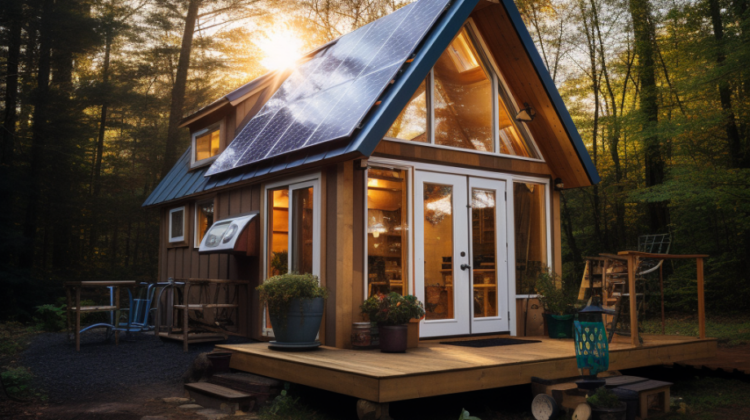
In the last few years, tiny homes have gained popularity as a sustainable and cost-effective housing choice. These dwellings are typically smaller than 400 square feet and are frequently constructed on a foundation or trailer. With the rise of tiny houses, there has also been an increased interest in sustainable living practices, including solar power. This article will explore the benefits and challenges of powering small homes with solar energy.
First, let’s talk about the benefits. The environmental impact is the most obvious benefit of using solar power in a tiny home. Solar panels produce electricity without emitting greenhouse gases or contributing to air pollution. This is a significant advantage over traditional fossil fuel-based electricity sources.
Additionally, solar power is a renewable resource not subject to price fluctuations like oil or natural gas. This means that tiny homeowners can have a reliable and consistent source of electricity without worrying about the cost of their energy bill.
Another advantage of using solar power in a tiny home is its portability. Many tiny houses are built on trailers and are designed to be mobile. This means they can be taken to remote locations where traditional electricity sources are unavailable. Solar panels can provide electricity in these locations, allowing tiny homeowners to live off the grid and explore new places without sacrificing comfort.
In addition to the environmental and portability benefits, solar power can save tiny homeowners money in the long run. While the upfront cost of installing solar panels can be high, the savings over time can be significant. Tiny homes typically have lower energy requirements than traditional homes, which means that they can often be powered entirely by solar energy.
This eliminates the need for a monthly electricity bill and can save tiny homeowners thousands of dollars over the life of their homes.
However, some challenges are associated with using solar power in a tiny home. One of the biggest challenges is the limited space available for solar panels. Tiny homes have less roof space than traditional homes, so there may need more room for a sufficient number of solar panels to meet all of the home’s energy needs.
This can be mitigated using high-efficiency solar panels or supplementing solar power with other renewable energy sources such as wind or hydropower.
Another challenge of using solar power in a tiny home is the variability of energy production. Solar panels produce electricity when the sun is shining, but not at night or during cloudy days.
This means that tiny homeowners may need to use a backup energy source during these times or modify their energy usage to align with the available solar energy. This can be managed through energy storage systems such as batteries or innovative home technology that automatically adjusts energy usage based on the available solar power.
Powering tiny homes with solar energy can provide many benefits, including environmental sustainability, portability, and cost savings. However, there are also challenges associated with using solar power in a tiny home, including limited space for solar panels and variability in energy production.
With careful planning and technology, these challenges can be overcome, and tiny homeowners can enjoy the benefits of renewable energy. As the demand for sustainable housing options continues to grow, we can expect to see more and more tiny homes powered by solar energy in the years to come.